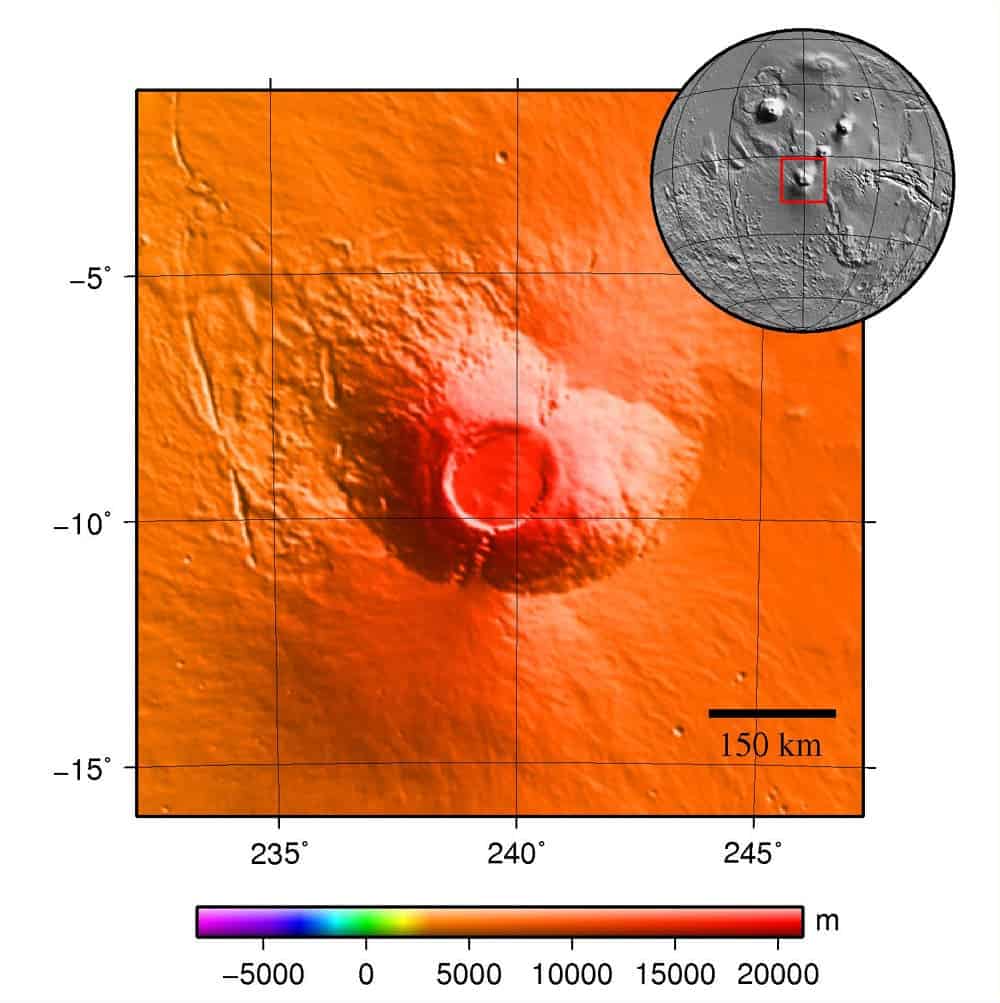Here’s a brain teaser: what do the dinosaurs and this giant volcano on Mars have in common? Well, according to NASA research, they may have gone extinct at about the same time.
A tad south of Mars’ equator, there’s a rough triangle of wide, softly sloped volcanoes collectively known as the Tharsis Montes. Its southernmost member is named Arsia Mons and, just like its two counterparts, was build by billions of years of lazy lava flows adding on top of one another. We don’t yet have all the details of how its lifecycle looked like, but now we do know when it likely ended — and it’s about the same time as the dinosaurs did.
Gone with the dinosaurs
In its heyday, Arsia Mons spewed out a new lava flow about once every 1 to 3 million years. The last big bout of its activity likely took place in the caldera (the bowl-shaped depression at the top), where scientists found 29 distinct volcanic vents, somewhere around 50 million years ago. This would coincide roughly with the Cretaceous-Paleogene extinction event, which killed off most of the species on Earth at the time, including the dinosaurs.
The caldera itself is a huge thing, measuring some 68 miles (110 kilometers) across. The researchers used high-resolution imaging taken with the Context Camera on the Mars Reconnaissance Orbiter to map the vents and boundaries between successive lava flows in the caldera, and used crater counting to estimate their age. Then they used a computer model developed by Jacob Richardson, a postdoctoral researcher at NASA’s Goddard Space Flight Center in Greenbelt, Maryland and his colleagues from the University of South Florida to determine the order in which each of the 29 vents formed.
The team found that the oldest flows date back to about 200 million years and the youngest between 10 or 90 million years ago. During the peak volcanic activity, they produced collectively produced an estimated 1 to 8 cubic kilometers of magma every million years, adding to the volcano’s height and size.
“It’s possible, though, that the last volcanic vent or two might have been active in the past 50 million years, which is very recent in geological terms,” Richardson said.
“Think of it like a slow, leaky faucet of magma. Arsia Mons was creating about one volcanic vent every 1 to 3 million years at the peak, compared to one every 10,000 years or so in similar regions on Earth.”
Understanding Mars’ volcanic activity would allow scientists to peer into the planet’s history and geological structure. A major step towards that goal is to understand the anatomy and lifecycle of these volcanoes, which are dictated by Mars’ internal characteristics and geological processes. And seeing how they behaved on Mars might also help us better understand the volcanoes down on our own planet.
“Mars’ volcanoes show evidence for activity over a larger time span than those on Earth, but their histories of magma production might be quite different,” said Jacob Bleacher, a planetary geologist at Goddard and a co-author on the study.
“This study gives us another clue about how activity at Arsia Mons tailed off and the huge volcano became quiet.”
Richardson will be presenting the findings on March 20, 2017, at the Lunar and Planetary Science Conference in The Woodlands, Texas. The study titled “Recurrence rate and magma effusion rate for the latest volcanism on Arsia Mons, Mars” has been published in the journal Earth and Planetary Science Letters.











